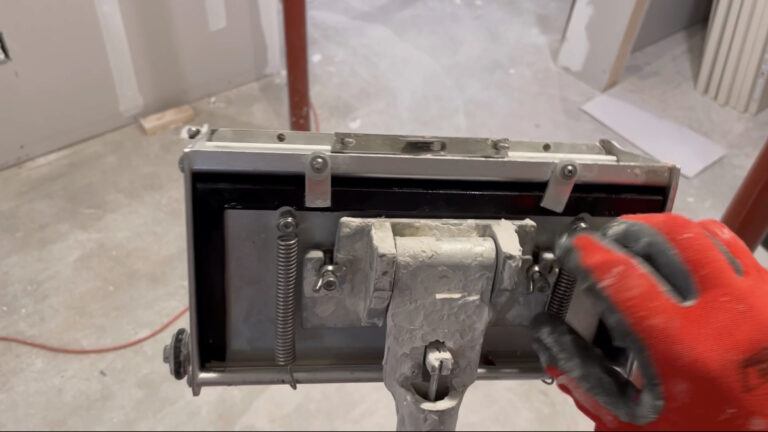How to Cut Drywall with a Utility Knife
Cutting drywall might seem like a simple task, but mastering the technique can save you time, reduce waste, and enhance your overall project quality. Recently, I undertook a home remodeling project that involved finishing my basement. As I kneeled on the floor measuring and remeasuring, I recalled how challenging it was during my first DIY renovation. Using a utility knife to cut drywall was a skill I had to learn the hard way—the first few sheets I attempted ended up uneven and jagged. This experience opened up my eyes to the importance of technique and precision in this seemingly mundane task.
In this blog post, I’ll share everything you need to know to cut drywall effectively with a utility knife, along with expert tips, tricks, and common mistakes to avoid.
What is Drywall?
Before diving into the cutting techniques, let’s briefly discuss what drywall is. Drywall, also known as gypsum board or wallboard, is a construction material primarily used for interior walls and ceilings. It consists of a gypsum core sandwiched between two sheets of heavy paper or fiberglass. Drywall is favored for its fire-resistance, ease of installation, and affordability.
Why Use a Utility Knife?
A utility knife is the primary tool used for cutting drywall, and for good reason. It’s versatile, portable, and can easily make clean cuts, especially for standard drywall sizes (such as 1/2 inch or 5/8 inch thickness).
Tools You’ll Need
- Utility Knife: Make sure to have a sharp blade; replace it if you notice ragged cuts.
- Straightedge or Ruler: For ensuring straight lines.
- T-Square: This tool helps you maintain right angles.
- Safety Equipment: Goggles and a mask to protect from dust.

Ensure your utility knife is sharp for the best results.
Step-by-Step Guide to Cutting Drywall with a Utility Knife
Step 1: Measure and Mark the Drywall
The first step in cutting drywall is accurately measuring the area you intend to cover. Use a tape measure to take the dimensions, marking the outline lightly on the face of the drywall using a pencil or chalk.
Tip: Always double-check your measurements to avoid any miscuts.
Step 2: Use a Straightedge
Once you’ve marked your line, place a straightedge or a ruler along your line. If you have a T-Square, this will help maintain a perpendicular line when cutting verticals or horizontals.
Step 3: Score the Drywall
Position your utility knife against the straightedge, and apply firm pressure as you score the drywall along your marked line. You don’t need to cut all the way through; scoring only the face paper is usually sufficient.
- Pro Tip: Score the drywall in one clean motion to avoid jagged cuts.
Step 4: Snap the Drywall
After scoring, place your knee or foot gently on the end of the panel. Bend the drywall, and it should snap cleanly along the scored line. If it doesn’t break easily, you may need to score it a bit deeper.
Step 5: Cut the Backing Paper
Once the drywall is snapped, use your utility knife to cut through the backing paper at the score’s edge. This will free the piece from the panel.
Step 6: Smooth the Edges
If needed, you can use your utility knife to trim or smooth any rough edges. Be sure to maintain a slight angle while cutting to get better results.
Common Mistakes to Avoid
- Using a Dull Knife: A dull blade will produce jagged cuts and more dust. Always ensure your blade is sharp!
- Wrong Measurements: Always double-check your measurements before cutting; it’s better to measure twice and cut once.
- Not Using a Straightedge: Freehanding your cut often leads to uneven edges. Always use a ruler or straightedge for straight lines.
Expert Tips for Cutting Drywall like a Pro
-
Invest in Quality Tools: A reliable utility knife and straightedge can make a significant difference in your cutting experience. Consider tools like high-quality drywall knives or specialized drywall saws for more complex jobs.
-
Practice Makes Perfect: If you’re new to cutting drywall, practicing on scrap pieces can help improve your technique before moving on to critical cuts.
- Safety First: Always wear safety glasses and a mask while cutting drywall to protect yourself from dust and sharp edges.
Final Thoughts
Cutting drywall doesn’t have to be an intimidating task. With the right tools and techniques, anyone can master this valuable skill. The key is in your measurement and execution. Practice makes perfect, and soon you’ll be cutting drywall like a pro.
Related Resources
Share & Resources
If you found this guide helpful, please share it on Pinterest, Facebook, or Reddit! Your support helps others find useful drywall cutting techniques.
Contractors, home improvement bloggers, and DIY forums: Feel free to link back to this article to assist your audience with expert drywall cutting tips.
Together, let’s empower our communities with the knowledge to improve our homes, one drywall project at a time!

